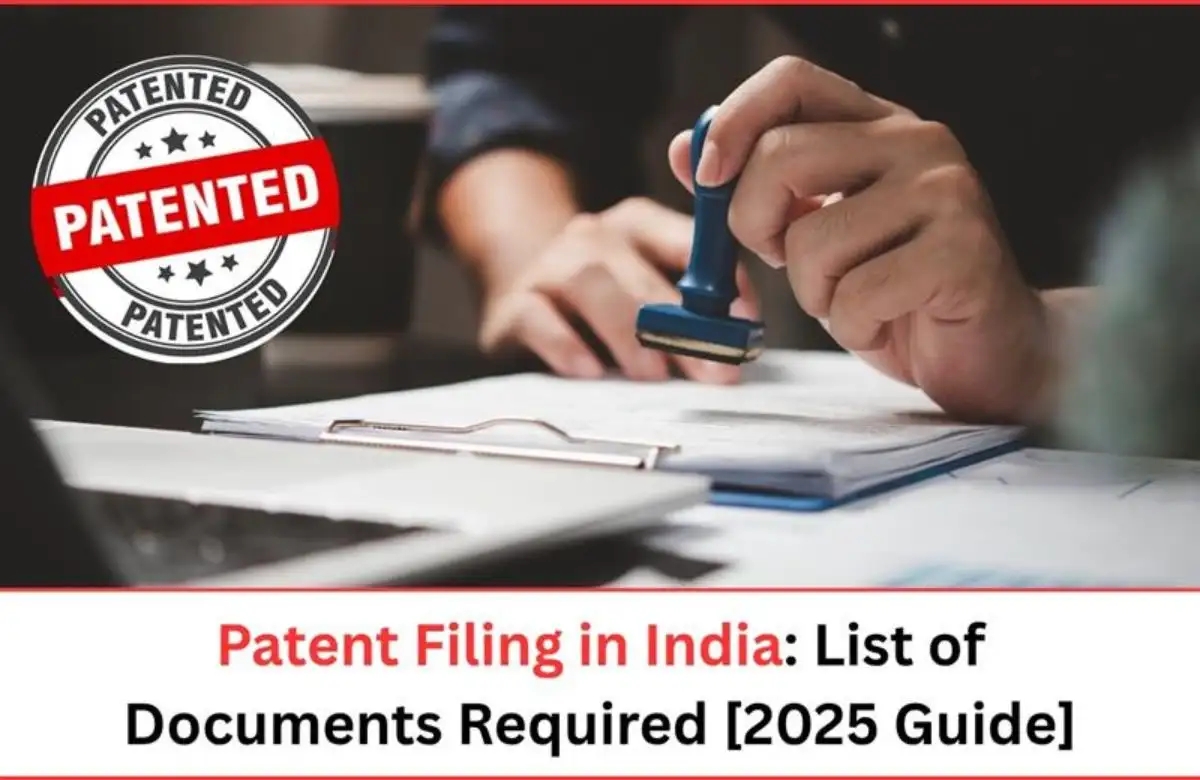
Protecting your invention is a major concern for inventors and investors alike. For anyone seeking a patent in India, it’s important to understand that the protection path is a long and structured journey. From understanding the process and preparing the list of required documents for patent filing in India to navigating through examination and potential opposition, each step plays a critical role in the Intellectual Property Rights (IPR) journey. In this article, we will give you a detailed overview of the documents required for patent filing
What Does a Patent Mean, and Why Do You Need One?
Suppose you’ve built a machine and want to make sure no one else can use, copy, or sell it—or any technology related to it—without your permission. To get that kind of legal protection, you need something called a patent. A patent is basically a way to legally protect your invention. If you’ve built something—like a machine—it makes sure that no one else can use it, copy it, or make money from it without your okay.
Types of Patent Filing in India
There are mainly three different types of patents.
What is a utility patent?
A utility patent protects new and useful inventions like machines, processes, or products. It’s the most common type of patent filed. To qualify, a patentability feature is required. A utility patent lasts 20 years from the filing date, but you must pay maintenance fees to keep it active. Examples include smartphone technology, water filters, and automated systems.
What is a design patent?
To qualify, your design must be unique. It lasts for 15 years, with examples including the Coca-Cola bottle or the shape of a smartphone.
What is a plant patent?
A plant patent provides legal protection for a new and distinct plant that is reproduced asexually (like by cutting or grafting, not seeds). To be eligible, the plant must be novel, non-obvious, and reproducible. The protection duration is 20 years.
Read Also: Columbia Sportswear Sues Columbia University Over Trademark Dispute
Which Documents Are Required For A Patent Filing In India?
1. Application Form (Form 1)
Basic form where you provide the inventor’s and applicant’s details, invention title, and previous filings (if any).
2. Invention Description (Form 2)
You can file either:
- Provisional specification—for early-stage ideas. Also known as Provisional Patent Drafting.
- Complete specification—full technical write-up with claims, abstract, and drawings.
3. Invention Details
Include a clear write-up of:
- How the invention works
- What it solves
- What parts does it include?
- Technical drawings (if needed)
4. Foreign Filing Statement (Form 3)
If you’ve filed the same invention abroad, disclose those details here. You’ll also need to keep this info updated.
5. Inventor Declaration (Form 5)
An official statement confirming who created the invention. The time limit is one month.
6. Authorization Letter (Form 26)
Required if you’re using a registered patent agent or legal representative to file on your behalf.
7. Early Publication Request (Form 9) (optional)
Let you ask for your application to be published before the usual 18-month period.
8. Request for Examination (Form 18)
It starts the official examination process. This must be filed within 48 months.
9. Ownership Proof or Assignment Deed (if applicable)
Needed if the applicant is not the inventor, for example, a company or employer. Must include a signed assignment or work contract.
10. Priority Documents (for international claims)
If your first filing was in another country, you’ll need to provide a copy of that application, along with a certified English translation if necessary.
11. Payment Receipt
Proof that you’ve paid the official government fees. This depends on the applicant type (individual, startup, small, or large entity).
12. Biotech Sequence Listing (if relevant)
If your invention involves DNA, proteins, or biological sequences, you’ll need to submit that data electronically.
The Patent Filing Process in India: A Step-by-Step Breakdown
There are a few steps that every inventor is required to fulfill to acquire a patent.
- Idea Development & Invention Reporting
This is the initial stage where the inventor clearly defines the problem and solution, documenting how the invention works.
- Patentability Check (Optional but Helpful)
A patentability or prior art search is conducted to see if similar inventions already exist. It helps determine whether the invention is new, involves an inventive step, and is industrially applicable—key criteria for patentability.
- Writing the Patent Document
This process involves drafting the patent application. This is also known as patent drafting.
- Submitting the Patent Application
A preliminary or full specification may be filed, upon which the application is allocated a reference number and date of submission.
- Patent Publication
The application is published in the Patent Journal. Early publication can be requested. Once published, the application enters the public domain, though rights are retroactive from the filing date.
- Request for Examination (RFE)
The applicant should file an RFE within 48 months. Only after this request is made will the Patent Office begin substantive examination of the application.
- Patent Review & Objection Handling
The applicant must respond to the objections, often through written arguments, amendments, or a hearing, within a fixed timeline.
- Patent Approval / Grant
After all the above steps are completed, the last step is the certification and approval. And you got the right for 20 years.
Read Also: India Rejects Software Patents: Delhi HC Rules Against Kroll
